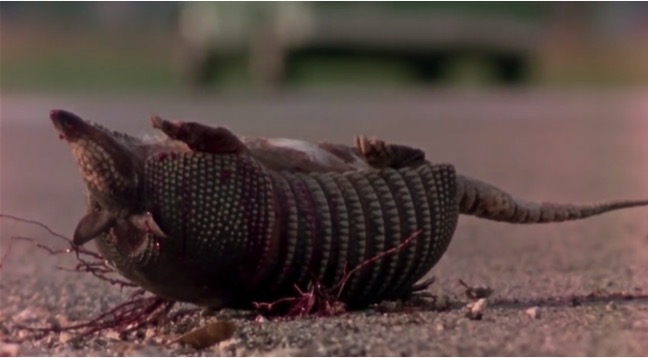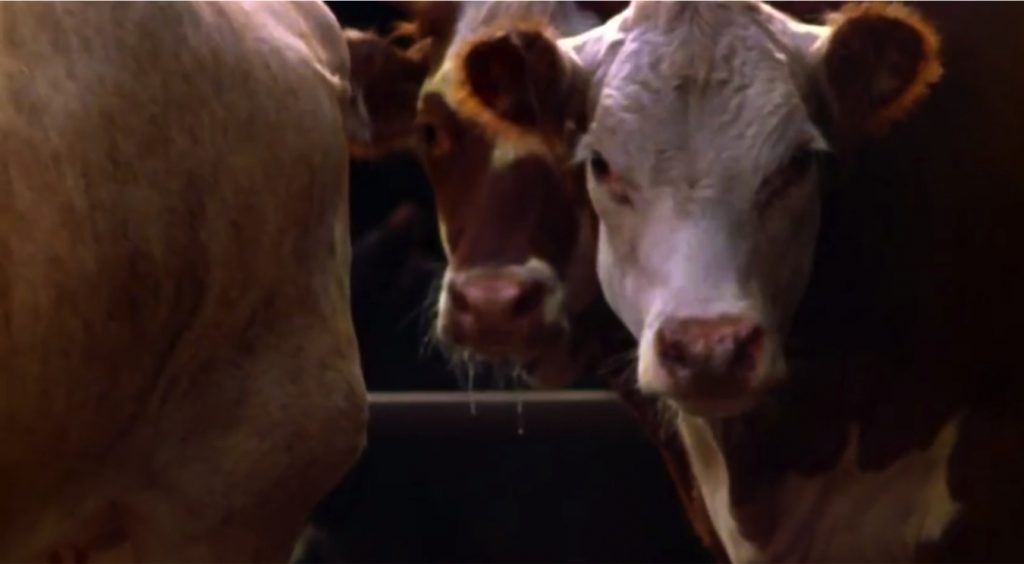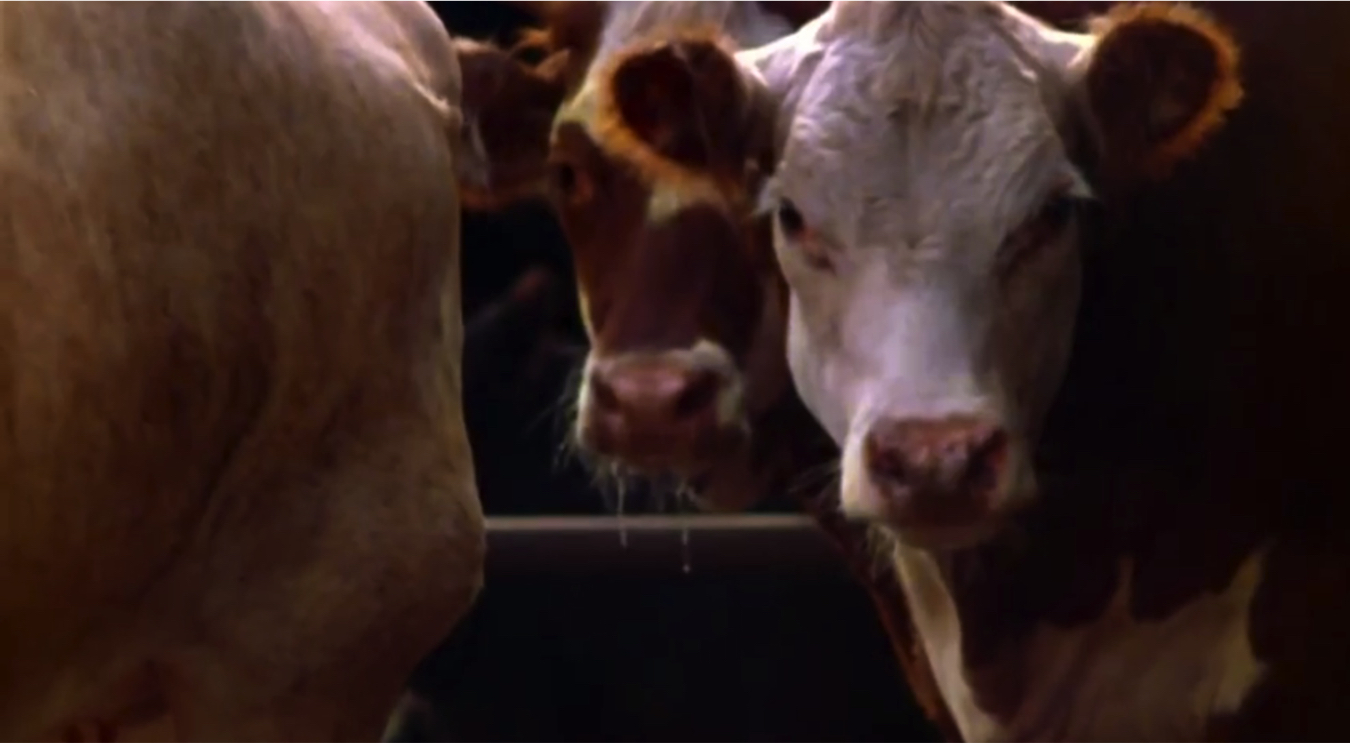By Jason Middleton.
Childbirth, aging, dying, and animal slaughter: these events that entail the passage or transformation of matter from one state into another have conventionally troubled documentary representation, evoking longstanding cultural taboos against their visualization. But what can we learn, and how are we changed, by seeing images that “cannot be unseen” (to use the popular idiom)? Documentary media that engage these events produce an experience of spectatorship that does not end when the film or video ends. Rather, through their production of affective intensities between bodies on and off the screen, they engender continuous processes of individual and collective realignment and becoming. A critical examination of the distinct and forceful modalities of feeling produced in and by these media motivates my book project, “Documentary’s Body: Instructional Aesthetics and Transmodal Affects.” It examines film and media objects whose intimate pedagogies of bodily transformation operate through their transmodal properties. By “transmodal,” I mean that what I term “instructional aesthetics” emerge from the transversal relations among a range of nonfiction media forms: feature-length documentary, activist video, home movies, and self-help and instructional videos. These various nonfiction forms are in turn formally and affectively imbricated with experimental media and narrative genre films.
Conventional documentary and narrative fiction films considered discreetly subject indexical imagery of bodily processes to visual elision, rhetorical containment, and metaphorical displacement. Through a transmodal analysis that draws in a range of more peripheral media forms, this project argues that the mobile affects associated with visceral bodily imagery open up new possibilities for ethical engagement and political praxis. Examining the interventionist work of nonfiction media not simply in the conventional terms of rhetoric and persuasion but as a sensory and embodied site of transformation allows me to develop new approaches to longstanding questions in documentary studies about the relationship among media, activism, and social change. In doing so, the project contributes a new analytic model that extends beyond the fields of film and visual culture and enters into dialogue with bioethics, health care politics, radical activism, and environmental studies.
The book’s first chapter, “Indexical Violence, Transmodal Horror: Screening the Slaughterhouse,” examines indexically-charged imagery of animals and slaughter and places the influential horror film The Texas Chain Saw Massacre (Tobe Hooper, 1974) in dialogue with food politics documentaries, animal-rights activist videos, the documentary film Earthlings (Shaun Monson, 2005) that catalogs forms of animal abuse, and internet “reaction videos” to Earthlings. Animal imagery literalizes The Texas Chain Saw Massacre’s central metaphor of worker dispossession and its aftermath, redoubling the film’s horrifying effects. The film’s horrific analogy between human and animal slaughter visualizes rhetorical devices used by animal rights scholars such as Peter Singer, which ask readers to imagine humans being put to the uses to which we conventionally put animals. In a corresponding but inverted relation between the figurative and the literal, the activist documentary Earthlings and its reaction videos reinvent the collective performance of terror and disgust among theatrical horror film audiences for a documentary context and for online platforms like YouTube. They function as a form of spreadable media in which viewers’ horrified reactions are harnessed in the production of knowledge and political commitment. The ambivalent interplay of fascination and repulsion that gives these various texts their affective force and political potential can only be understood though a transmodal analysis across the registers of fiction and nonfiction media forms. The following is an excerpt from the chapter’s first section, on The Texas Chain Saw Massacre.
____
Hooper’s film follows its opening credits sequence with a static shot of a static object. In closeup, with a low angle and shallow focus that make it dominate the visual field, the film presents us with an image of a dead armadillo, on its back by the roadside. The viewer’s sense of this found object’s simultaneous contingency and necessity grounds the film immediately in an aesthetic of cinematic realism: the unedited long take seems to index the “physical reality” (to invoke Kracauer) of the rural Texas locations out of which the film constructs its surreal and horrifying diegesis.1 As Bill Nichols points out, the indexical bond between image and historical object is present in fictions as well as in documentaries, but in a fiction film it functions more as an anchor and point of departure, from which “[o]ur attention flows inward, to comprehend and interpret a story set in a world rather than outward, to understand and assess an argument about the world.”2 It is really a question of the spectator’s orientation—or “intentionality”—toward the film.

Still from The Texas Chain Saw Massacre (Tobe Hooper, 1974)
The distinctive quality of the armadillo shot is how it suspends the viewer at this point of departure, lingering on the world without yet offering a story. But the armadillo is both index and symbol. It not only situates viewers in a reality recognizable as their own, one occupied by the dead armadillo that they infer to pre-exist the film’s fictions, but it also gestures ahead toward the content of those fictions: this particular creature has already died, but many more deaths await the spectator of this film—as the human comes to substitute for the animal.
In the film’s familiar plot, brother and sister Sally and Franklin Hardesty and three other middle-class teenagers journey to visit the now-dilapidated family home of the siblings’ grandfather, a cattle rancher, only to be violently murdered and dismembered by a deranged family of unemployed former slaughterhouse workers. Following horror film convention, The Texas Chain Saw Massacre arguably involves a return of the repressed. The best-known version of this interpretation comes in Robin Wood’s essay, “The American Nightmare: Horror in the 1970s.”3 Wood’s central thesis is that the true subject of the horror film is the struggle for recognition of all that our civilization represses or oppresses. The re-emergence of that which is repressed or oppressed is dramatized as an object of horror, and the happy ending comes when repression is reinstated.
Wood views the working class as one such category of oppressed social Other, embodied in the film by the monstrous family of former slaughterhouse employees. The dispossessed workers refuse to stay hidden, and enact revenge by turning the tools of their former trade upon their middle-class exploiters. Within the terms of this interpretation, viewers are horrified by a substitution in which people are treated like cattle; because people are hung up on meathooks and cut open like carcasses, and because of the dawning realization that the “barbecue” the teenagers consume early on in their journey may in fact be the cannibalistic product of the deranged family’s monstrous labors. And thus the film functions as allegory of capitalist exploitation and its potential reversal.
This interpretation is unassailable, but only begins to account for the film’s horrifying effects–because the imagery in the film cannot always be read metaphorically in this manner. Images of animals, including the dead armadillo and a series of shots depicting cattle in pens (to which I will turn shortly), rupture narrative flow and shift the film toward a documentary register. In doing so, they re-literalize the figurative: the film is horrifying not only because it makes a point about social oppression conveyed through a disgusting reversal. Additionally, these images’ heightened indexicality offers an uneasy reminder of the cattle that lends itself so readily for use in the film’s figurative horrors.
As the teenagers continue in their van en route to Sally and Franklin’s grandfather’s house, they all react suddenly to a powerful and disgusting smell. Franklin points out that they are passing the old slaughterhouse to which his and Sally’s grandfather, a successful rancher, used to sell his cattle. After Franklin speaks, the film cuts away from the van to a series of claustrophobic close-up shots from within the cattle pens. Viewers do not see the cows killed, but they know that in the historical world, these particular cows will eventually be slaughtered. When the film finally cuts back to the interior of the van, Franklin continues his animated explanation of the killing process at the exact point at which he left off. These shots’ direct interruption of narrative temporality contributes to their disturbing quality. The viewer experiences them as interruption not only because of the image cuts, but even more forcefully, through the discontinuous nature of the sound editing. The interior of the van and the interior of the cattle pens represent two distinct aural spaces (the teenagers’ dialogue and the cows’ mooing). After an initial sonic overlap between the two spaces, the sound of the van cuts off in an abrupt and jarring manner and the sounds made by the cows are magnified. When narrative flow is restored back in the van, it produces a feeling of unsettling temporal discontinuity: it seems that Franklin’s dialogue continues from exactly the point at which it was suddenly cut off, and yet over fifteen seconds have passed in which we have been confronted only with the images of cattle.
So, on the one hand, the images literally interrupt the narrative and insist upon their presence—they challenge viewers to look at them and remember them while they subsequently listen to Franklin’s description of the killing, perhaps leading them to share Sally’s sentiment: “Franklin, I like meat. Please change the subject.” But, in a further complication, the shots of the cows are not strictly indexical in their presentation. The film’s soundtrack adds a symbolic layer with the disconcerting noise of a power saw. At the very least, this sound is temporally dislocated in the film’s narrative. However, since we never actually see cattle slaughtered in the film, the only diegetic source for this sound is the chainsaw later used to kill the teenagers. The sound thus functions to foreshadow the substitutability of the cows and the teens. Alternatively, if viewers experience the image of the cows primarily through their formal interruption of the narrative flow and as a reminder of the extra-diegetic world these cows once shared with them, then the sound foreshadows the real-life saw that eventually cut up the bodies of these particular cows that Tobe Hooper and his crew stopped to photograph one afternoon. Each of these possible forms of spectatorial experience co-exists with and informs the other, momentarily displacing but never cancelling the other out.
The sound of the saw, and the presence of animals in the film more broadly, pull the viewer in two directions simultaneously–into and out of its diegesis. The film’s profound ability to disturb lies in how its literal and figurative registers can be separated from one another but keep combining into a more powerful whole, like a stereoscopic image. Cows and people, barbecue and cannibalism—each term perpetually substitutes for the other, such that the killing scenes are horrific not just because we see people being treated like cattle, but also because we are insistently reminded of how cattle are, always, being treated like cattle. What Vivian Sobchack terms the “charge of the real” marks a recrudescence of the literal in the film’s central figure for worker dispossession and its aftermath.4
The film’s redoubling of its horrific effects through the interchange of fiction and documentary registers thus adds an additional dimension to viewers’ horrified identification with the teenagers’ vulnerability. In other words, the film’s plot depicts, through horrific imagery, a reversal of power between working and middle class subjects, performed through a substitution of middle-class teens for cows on the meathook and under the saw. But, as I have suggested, the cows themselves do not disappear in this analogy; their insistent presence produces an oscillation for viewers between the registers of the figurative and the literal that may include a felt sense of shared vulnerability and mortality with the animals in this analogy along with the teens that substitute for them.

Still from The Texas Chain Saw Massacre (Tobe Hooper, 1974)
This potential for a felt implication in the fates of both teens and cows proceeds from a conception of the human-animal relationship on which influential theories of “speciesism” and animal rights have been predicated. Philosophers Peter Singer and Tom Regan popularized the concept of speciesism, arguing that in our attitudes toward members of other species we hold prejudices that are perfectly analogous to prejudices people hold, for example, toward people of other races. The Singer-Regan case for animal rights and interests is developed by means of analogies; they suggest, for example, that if we use animals’ lack of speech or higher levels of cognition as justification for their domination by humans, then we should extend this reasoning to humans that are brain-damaged or unable to develop speech—making them available for use in experimentation, as food, and so on. Others such as Cora Diamond rightly counter this form of argument. They argue that predicating the rights of animals on tacit assumptions about the rights of humans actually tells us little about our relationship with animals or with other humans. The reasons why we do not eat other humans are not reducible to concepts of shared interests or the prevention of suffering—but these principles underlie Singer’s case against eating animals.
My interest is not in debating the Singer-Regan model, but in suggesting that its influential conception of human-animal relations illuminates The Texas Chain Saw Massacre’s multivalent horrors. The form of the violence against the teens can be seen to visualize the very logic of Singer’s argument, whose force depends upon its rhetorical figuration of the substitutability of humans and animals in relations of exploitation (that is, if you say animals are OK to eat because they can’t speak, use tools, etc., then you might as well eat a comatose human). This formal expression of what Singer would characterize as the repressed ethical implications of animal slaughter and meat consumption thus redoubles the film’s horrific depiction of the revenge of monstrous working-class Others. The human capacity to regard animals as subjects and the recognition of working-class labor are dually manifested in the film’s return of the repressed. The Texas Chain Saw Massacre confronts viewers with these imbricated forms of disavowal surrounding slaughter and meat, but offers no possibility for resolution or means of working through these contradictions; they contribute instead to the film’s larger sense that Wood describes as “a civilization condemning itself, through its popular culture, to ultimate disintegration, and ambivalently… celebrating the fact.”5
____
People For the Ethical Treatment of Animals placed The Texas Chain Saw Massacre on its list of “top movies that will make you go meatless.” My analysis in this chapter argues that the film does, through its visual and narrative substitutions between cattle and teenagers, express in horrific form the logic of Peter Singer’s arguments against eating animals, but its goals are certainly not instrumental and proselytizing in the manner of Earthlings. Earthlings assaults the viewer with its indexical imagery of brutality, but leaves intact a belief in the power of documentary film to convey important knowledge and effect personal and social change. Sobchack’s “charge of the real” describes a felt shift in a film’s ontological register, with the killing of a real animal within a fictional diegesis linked to a response of ethical care. I argue that this charge may be produced by shifts moving in both directions between the literal and figurative, sometimes creating multilayered emotional effects. In other words, if The Texas Chain Saw Massacre horrifically visualizes Singer’s rhetorical substitution of cows and people in his case for animal rights, then a young man’s statement in an Internet reaction video that Earthlings is “like watching The Texas Chain Saw Massacre, but real life” effectively describes an experience of seeing animals that have been figuratively converted into people– and then converted back into animals.
Jason Middleton is associate professor in the English Department and the Graduate Program in Visual and Cultural Studies, and director of the Film and Media Studies Program, at University of Rochester. He is author of Documentary’s Awkward Turn: Cringe Comedy and Media Spectatorship (Routledge, 2014), and co-editor of Medium Cool: Music Videos from Soundies to Cellphones (Duke UP, 2007). His work has been published in Cinema Journal, Feminist Media Histories, The Journal of Visual Culture, Popular Music, The Velvet Light Trap, Afterimage, Avidly, and Los Angeles Review of Books. His current book project is titled “Documentary’s Body: Instructional Aesthetics and Transmodal Affects.”
- In his production history of the film, actor Gunnar Hansen (Leatherface) details how the film’s art directors found and staged the desired roadkill for the opening shot. Gunnar Hansen, Chain Saw Confidential: How We Made the World’s Most Notorious Horror Film (San Francisco: Chronicle Books, 2013), 35-36. ↩
- Bill Nichols, Representing Reality: Issues and Concepts in Documentary (Bloomington: Indiana University Press, 1991), 150. ↩
- Robin Wood, “The American Nightmare: Horror in the 1970s,” in Hollywood from Vietnam to Reagan (New York: Columbia University Press, 1986), 63-84. ↩
- Vivian Sobchack, Carnal Thoughts: Embodiment and Moving Image Culture (Berkeley: University of California Press, 2004), 261. ↩
- Robin Wood, “The American Nightmare: Horror in the 1970s,” 84. ↩

